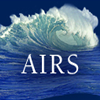|
Christine Baker Affiliate cmbaker9@uw.edu |
|
Publications |
2000-present and while at APL-UW |
Assessing NOAA rip-current hazard likelihood predictions: Comparison with lifeguard observations and parameterizations of bathymetric and transient rip-current types Casper, A., E.S. Nuss, C.M. Baker, M. Moulton, and G. Dusek, "Assessing NOAA rip-current hazard likelihood predictions: Comparison with lifeguard observations and parameterizations of bathymetric and transient rip-current types," Weather Forecasting, 39, 1045-1063, doi:10.1175/WAF-D-23-0181.1, 2024. |
More Info |
1 Jul 2024 |
|||||||
|
Rip currents, fast offshore-directed fl ows, are the leading cause of death and rescues on surf beaches worldwide. The National Oceanic and Atmospheric Administration (NOAA) seeks to minimize this threat by providing rip-current hazard likelihood forecasts based on environmental conditions from the Nearshore Wave Prediction System. Rip currents come in several types, including bathymetric rip currents that form when waves break on sandbars interspersed with channels and transient rip currents that form when there are breaking waves coming from multiple directions. The NOAA model was developed and tested in an area where bathymetric rip currents may be the most prevalent type of rip current. Therefore, model performance in regions where other types of rip currents (e.g., transient rip currents) may be more ubiquitous remains unknown. To investigate the efficacy fi cacy of the NOAA model guidance in the context of different rip-current types, we compared modeled rip-current probabilities with physical-based parameterizations of bathymetric and transient rip-current speeds. We also compared these probabilities to lifeguard observations of bathymetric and transient rip currents from Salt Creek Beach, California, in summer and fall 2021. We found that the NOAA model skillfully predicts a wide range of hazardous parameterized bathymetric speeds but generally underpredicts hazardous transient rip-current speeds and the hazardous rip currents observed at Salt Creek Beach. Our results demonstrate how wave parameters, including directional spread, may serve as environmental indicators of rip-current hazard. By evaluating factors that influence fl uence the skill of modeled rip-current predictions, we strive toward improved rip-current hazard forecasting. SIGNIFICANCE STATEMENT: The purpose of this study is to evaluate how well the NOAA rip-current hazard model predicts different rip-current types. Accurate forecasting of rip currents is important because rip currents are the leading cause of death and rescues at surf beaches worldwide. By comparing the performance of the NOAA model to parameterized rip-current speed and lifeguard observations of rip-current strength, we highlighted the model's decreased ability to predict hazardous transient rip currents compared to hazardous bathymetric rip currents. Because bathymetric and transient rip currents are driven by different environmental conditions, an improved hazard model must be sensitive to these different conditions to predict a greater range of hazardous rip currents. |
|||||||||
Two-dimensional inverse energy cascade in a laboratory surf zone for varying wave directional spread Baker, C.M., M. Moulton, C.C. Chickadel, E.S. Nuss, M.L. Palmsten, and K.L. Brodie, "Two-dimensional inverse energy cascade in a laboratory surf zone for varying wave directional spread," Phys. Fluids, 35, doi:10.1063/5.0169895, 2023. |
More Info |
1 Dec 2023 |
|||||||
|
Surfzone eddies enhance the dispersion and transport of contaminants, bacteria, and larvae across the nearshore, altering coastal water quality and ecosystem health. During directionally spread wave conditions, vertical vortices (horizontal eddies) are injected near the ends of breaking crests. Energy associated with these eddies may be transferred to larger-scale, low-frequency rotational motions through an inverse energy cascade, consistent with two-dimensional turbulence. However, our understanding of the relationships between the wave conditions and the dynamics and energetics of low-frequency surfzone eddies are largely based on numerical modeling. Here, we test these relationships with remotely sensed and in situ observations from large-scale directional wave basin experiments with varying wave conditions over alongshore-uniform barred bathymetry. Surface velocities derived with particle image velocimetry were employed to assess the spatial scales of low-frequency surfzone eddies and compute structure functions with alongshore velocities. Second-order structure functions for directionally spread waves (σθ ≥ 10°) are consistent with energy flux to larger or smaller length scales, while normally incident, unidirectional waves do not display this behavior. Third-order structure functions suggest that the surfzone flows exhibit a bidirectional energy cascade — a direct cascade to smaller and inverse cascade to larger length scales — during large directional spreads waves (σθ ≥ 18°). However, there is not decisive evidence of an inverse energy cascade for moderate directional spreads (σθ ≥ 10°). Energy flux varies by cross-shore location and increases with increasing directional spread and wave height. Eddy decorrelation length scales weakly depend on wave directional spread. These findings advance our understanding of the dynamics linking wave breaking to large-scale rotational motions that enhance mixing and lead to rip currents, important conduits for cross-shore material exchange. |
|||||||||






